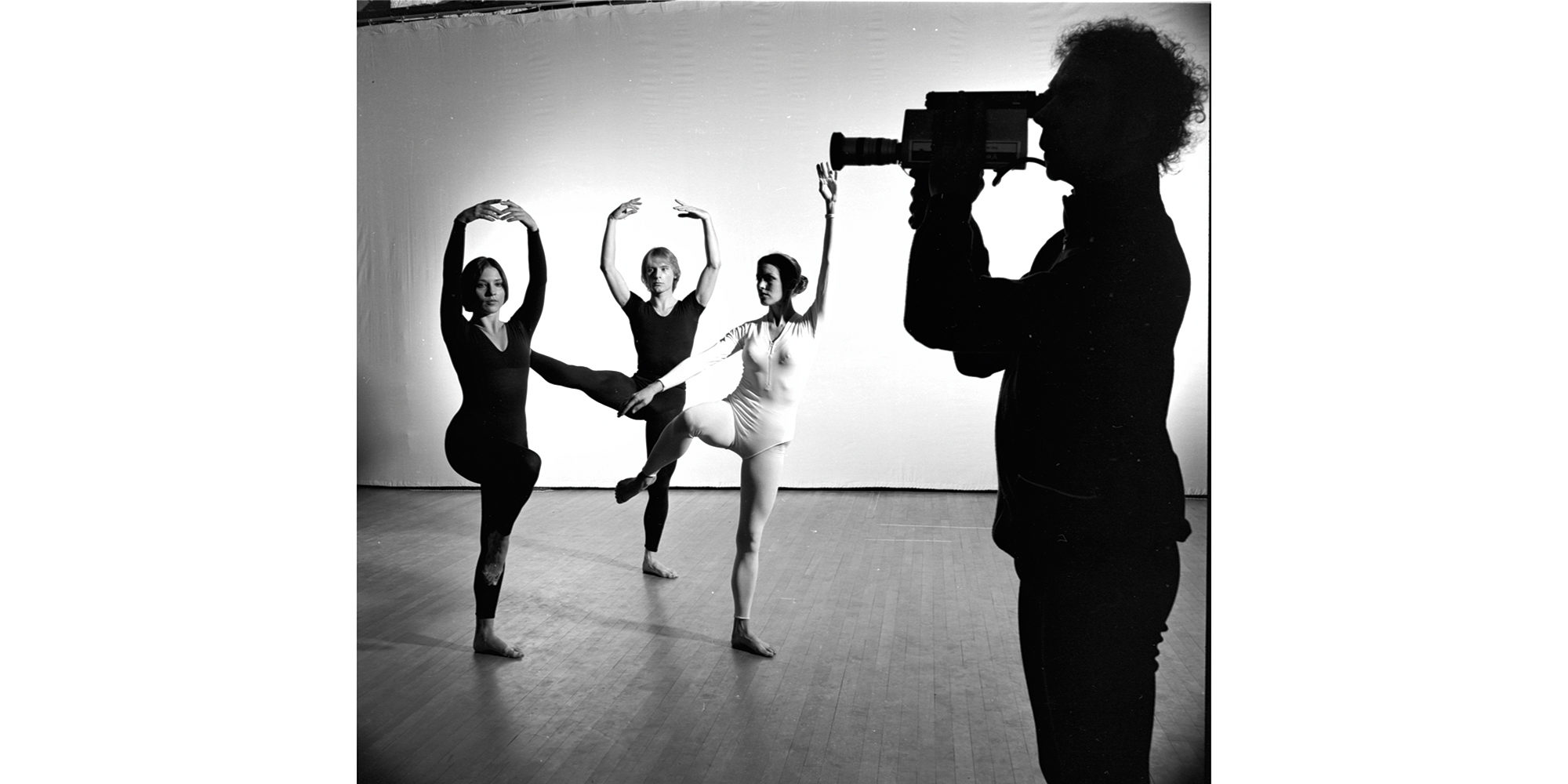Yellow-and-gray-clad dancers orbit in mercurial rings in the late choreographer Merce Cunningham’s “Sounddance.” This hypnotizing image comes to mind when describing the American artist’s legacy—fluid and communal, it exemplifies his method of working with a rotation of trusted collaborators: David Tudor wrote the score, and Mark Lancaster designed the set and costumes. The components were crafted independently, and brought together right before the March 1975 premiere, at Detroit’s Music Hall. Cunningham liked to work together–but apart.
“Sounddance” will be among the notable performances presented for “Merce Cunningham: Common Time,” a two-part retrospective opening this month that straddles Minneapolis’s Walker Art Center and Chicago’s Museum of Contemporary Art (Feb. 8-July 30 and Feb. 11-April 30, respectively). A few key pieces overlap, including Tacita Dean’s six-part, 2008 film Merce Cunningham performs Stillness (in three movements)…, which features an 88-year-old Cunningham performing to “4’33,” the seminal composition by his life partner, John Cage, who passed away in 1992.
The Walker’s senior curator of performing arts, Philip Bither, helped bring Cunningham’s story to life using some of the 4,500-plus items collected since the museum first hosted the Merce Cunningham Dance Company, in 1963. “Cunningham’s long history with the Walker has helped us to not stay in our silos,” says Bither. “This project has become a perfect teaching model for us to break down lines between departments.” Staffers at the MCA felt similarly, Bither mentions. The inclusive mindset translated to the exhibitions, so pieces on view that resulted from collaborations with other artists are portrayed as equally critical as the main event.
In one instance, the MCA will reprise “Rainforest,” an interactive performance first staged in 1968 around Andy Warhol’s “Silver Clouds,” a swarm of moored and unmoored helium balloons. These and other objects help one locate oneself within the swirling universe of Cunningham’s practice, which paved the way for movement-defining performance artists of the 1970s, from Yoko Ono to Vito Acconci. Like the iconoclast it celebrates, “Common Time” is a dynamic force, bringing in multiple voices and generations.

